Back in the far distant past the First People began leaving marks on the walls around them. Simple designs, sometimes no more than a scratch, perhaps signifying that they were there. We call these marks petroglyphs.
As time went on the marks grew more sophisticated, representing more elaborate concepts. Animals, human shapes odd to our eyes, strange swirls or repetitive parallel lines in a group perhaps indicating a river or stream. These were just a few of the shapes amongst thousands left on canyon walls, along stream beds, in caves, anywhere the people went.
The most important of the images they placed on the surface of their surroundings was the shape of the human hand, their hands, the hand of the individual making the drawing. This mark said here I am. I am a person. I am important. Know all of you that I have been here. These are known as pictographs if they are painted onto the surface of the rock.
Usually the images created were chiseled into the surface of the stone by hammering the design into the surface of the rock by striking it with another sharper more pointed stone, chipping away the dark patina of the rock leaving an indelible lighter contrasting representation of the design, a petroglyph. But occasionally a simpler more direct method was used. By simply placing their hands into a medium such as paint or even mud and pressing their palms against the stones surface they achieved the same result although a much more impermanent one, but the meaning was the same, a pictograph. Here I am, I leave my mark for you to see.
That type of image creating usually did not stand the ravages of time, especially if it was left exposed to the elements, but they are found in caves and other protected places looking much as they did when they were created.
We think of these kinds of images as something out of history. An art that served its purpose but has been replaced by newer forms of image creating. Yet it appears that is not totally the case. These handprints on the metal in the image above were left by the direct descendants of those First People just a few days ago at a place that is itself historically significant.
Every year along the banks of the Little Bighorn river there is a reenactment of a famous battle called the Battle of the Little Bighorn where General George Armstrong Custer and all the men of the 7th cavalry under his command were engaged by a superior group of Indians including chiefs Sitting bull, Crazy horse, Gall and others. The result is well-known as it was a critical victory for the tribes fighting to remain independent and self-sufficient. Custer and his men were decimated to the last man.
This year the reenactment of that fateful battle took place on the 23rd, 24th, and 25th of June, on the Real Bird ranch adjacent to the Little Bighorn Battlefield National Monument near Crow Agency, Montana and included members of the Crow tribe and various groups representing the cavalry. Each side took great pains to be as true to the period as is possible today, with the cavalry in full uniform and equipment and the Indians in full regalia and paint with even their horses painted for battle.
So it was not surprising to see these modern pictographs placed at the site where the warriors of today watered their ponies and waited for the fighting to commence along the Little Bighorn river, near the ford in the river that led to that fateful battle site. Somehow it’s comforting to see the continuation of these same handprints used today as they were millennia ago. Young men partaking in a mock battle yet still requiring their total participation both mentally, physically and spiritually. By creating these new pictographs they are saying, I too, am here. I am a Man. I am important. History and tradition is moving on through this time period as it has since the beginning. And so it continues.

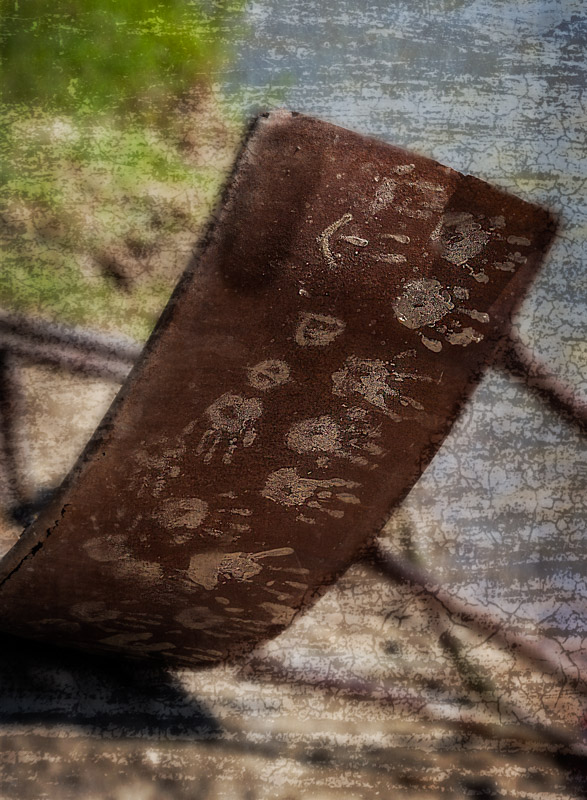
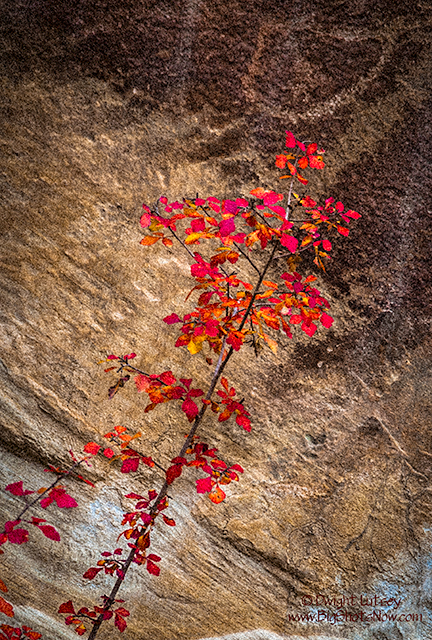
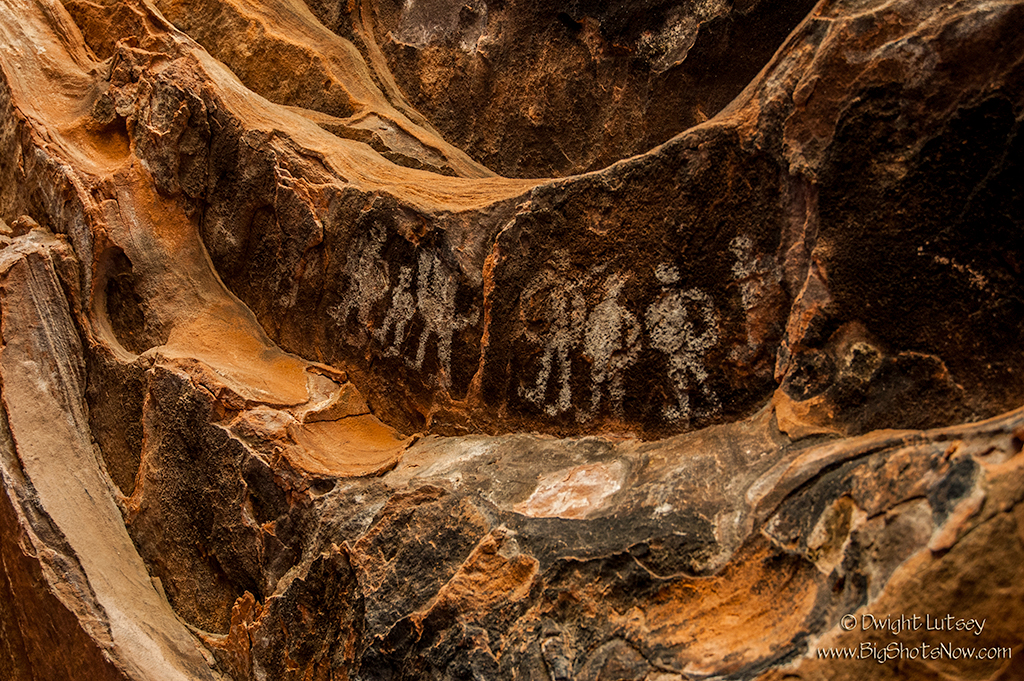
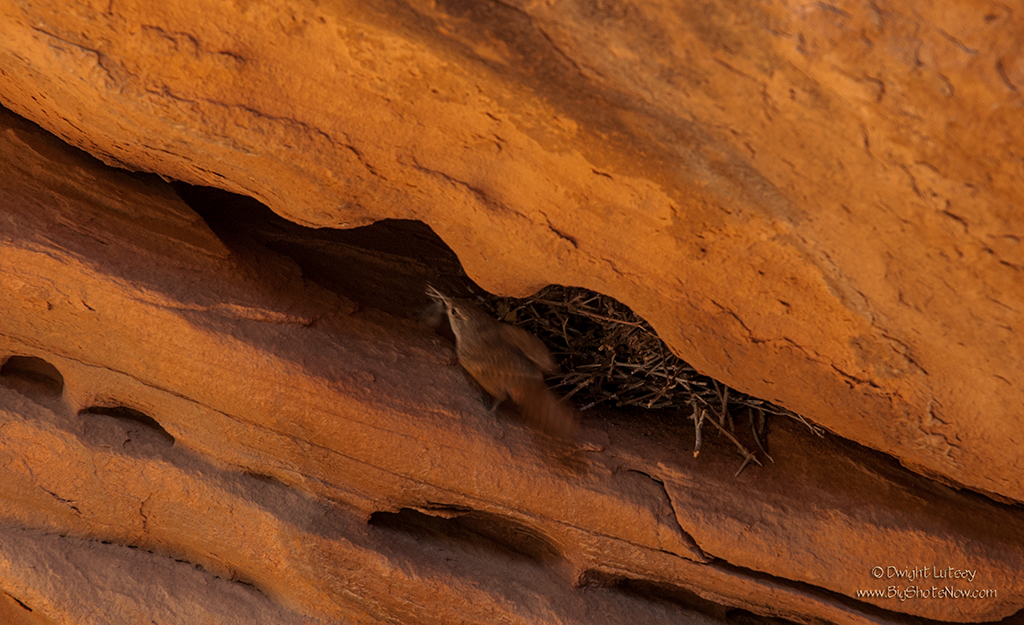
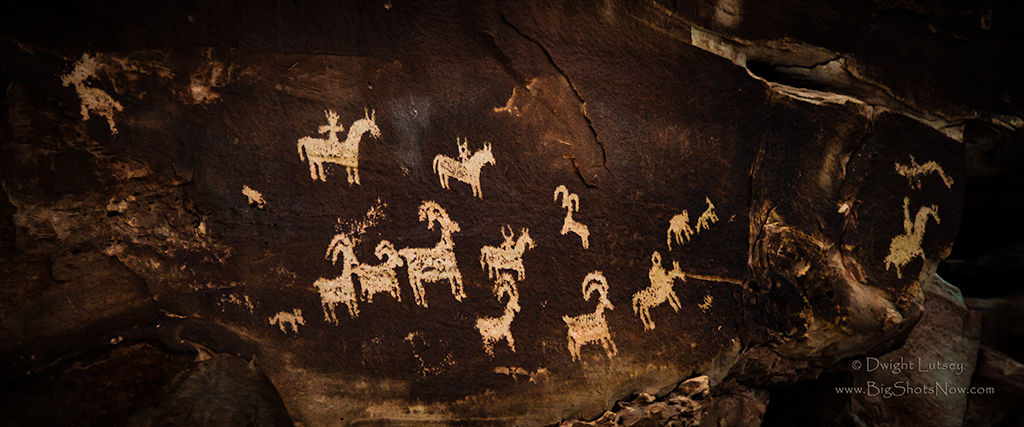
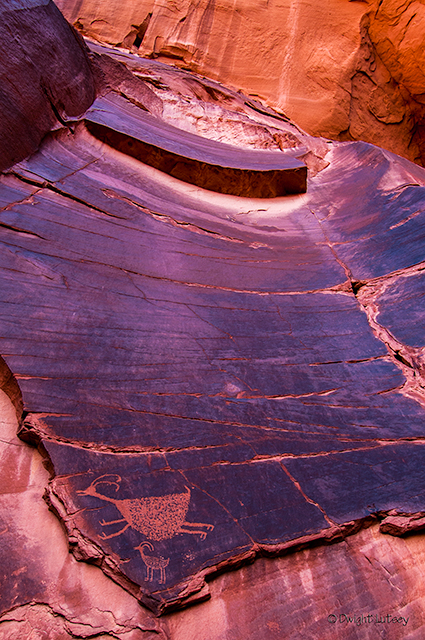
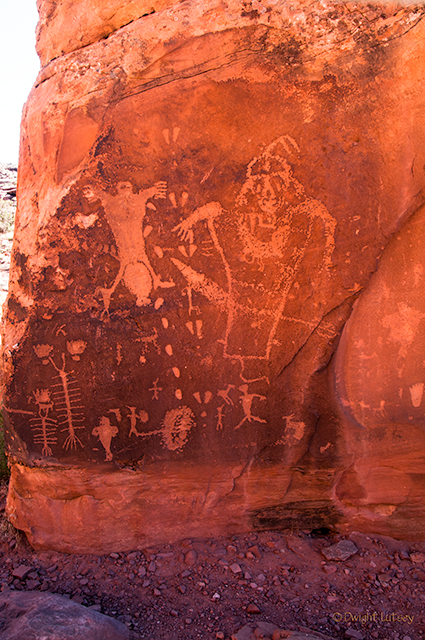
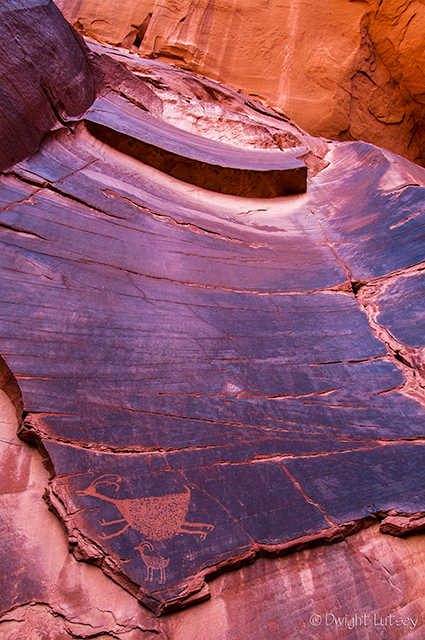
You must be logged in to post a comment.